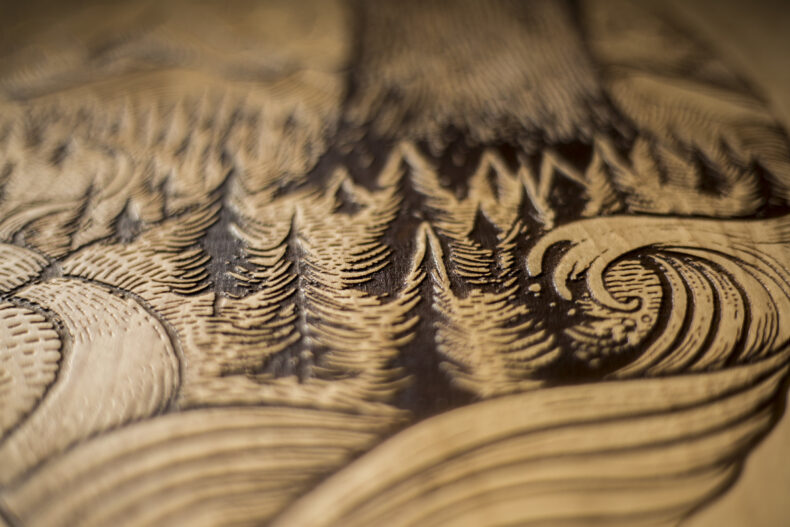
It’s hard to know what to say, every twist and turn becoming a knot. Forces are crashing, glass flying. I’m up in the mountains where ancient volcanoes choked themselves to death, then eroded for 30 million years into the throaty remnants of a Colorado hotspot. Forests have grown on the rubble and I’ve been walking through some lately that feel healthy, getting enough respite from droughts that their leaves and needles are many and green. Pine cones are falling and I stop to watch them.
The cones that catch my attention are from ponderosa pines. Light and woody, the size of softballs, they let loose one at a time, thumping branch to branch, then half a second of quiet as they fall the rest of the way and land in a nest of needle duff. Their papery seeds fall out as the cone slowly unfolds on the ground.
Walking with a friend the other day, I came on a big, dead ponderosa, all of its needles fallen. Stricken by who knows what, it stood like withered finger 40 feet tall. The ground around it was a circle of hundreds upon hundreds of freshly-fallen cones. It looked like the tree took its final stroke of life and put it into reproduction, squeezing out everything it had. My friend and I stopped and marveled at the feat, the tree knowing it was a goner and making one last stand. We complimented it — as if the tree could still hear us — impressed and wowing at its determination.
As we left, I picked up one of its cones, as light as the body of a small bird. I wondered what the tree’s last wishes might be, settling on dispersal. Clearly, that’s what it was saying. The circle of cones means only one thing. I was here with appendages and locomotion, why not lend a hand? I walked for a few minutes and tossed the cone into a shady hollow feeling like a sort of one-off Johnny Appleseed. That’ll get you a little farther.
Then I heard another fall, tapping from branch to branch, and I saw it land. I picked it up, said something to the tree that had let it go, and walked for a few more minutes with this new cone in hand. I tossed it into a place where ponderosas were doing well, smaller junipers tucked around them for shade.
I believe we should all be doing this, going for handfuls of grass seed, or waving old and dislodged mushrooms around to spread their spores. Choose the species, make it native, do it out of habit. We can be a form of pollinators as we walk. I’ve done it with desert yuccas, emptying their many black seeds into my hand and waving them this way and that. Same for cactus fruit I’ve eaten, spitting seeds as I go. The dried pods of wild iris I use like pepper shakers. You have to think like the plant. Where would you want to be?
The impact might be nothing, but I believe it matters. In the company of extinctions and shifting, unstable climates, genes could use as much stirring and robustness as possible. It doesn’t have to be a herculean effort with a pack full of seeds and a shovel for a spreader. Just your hand reaching down, picking up a cone, and giving it a toss is a worthwhile act.
Art: woodcut by Jeremy Collins, who, I’m excited to say, is doing the cover of my next book.
jercollins.com
Very nice! Great idea. I’ve done this occasionally, but without any thought! Just another something to do while walking in the woods!